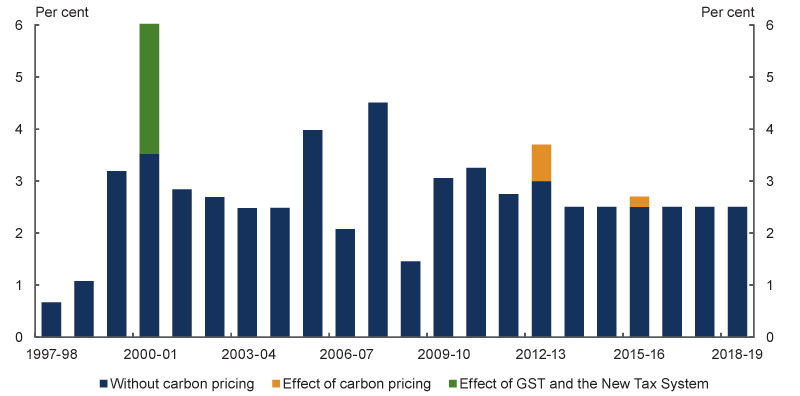Pricing pollution will change relative prices, making goods that generate more pollution more expensive and those that generate less pollution relatively cheaper, but the overall impact will be far less than previous reforms like the GST.
Pricing carbon will increase aggregate consumer prices in 2012-13 by a modest 0.7 per cent.
This increase is small compared to changes in the CPI seen in Australia over the past decade or so, and changes expected into the future.
It is also small compared with the spike in inflation from introducing the GST or ongoing changes from import prices.
The GST and related changes to the tax system increased the CPI by an estimated 2 ½ per cent, more than 3 times as large as the impact of a $23/t CO2-e carbon price.
By way of comparison, import prices fell 11 per cent in 2009-10, reducing the CPI by 1.9 per cent.
Every cent raised from the carbon price will be used to assist households, support jobs and competitiveness, and help build a clean energy future.
The Government is using more than half the money raised from carbon pricing to help households with the increase in the cost of living.
As consumers respond to carbon pricing, many will find ways to reduce their consumption of high polluting goods and improve their energy efficiency, especially as new technology offers consumers more choice.
This will allow consumers to pocket more of the household assistance.
CPI effect from the introduction of carbon pricing compared to history
